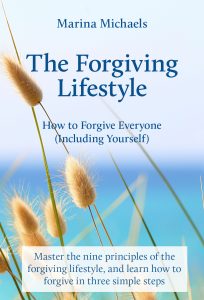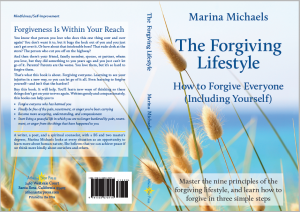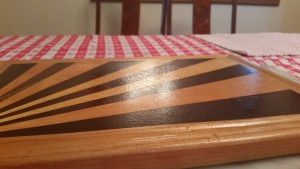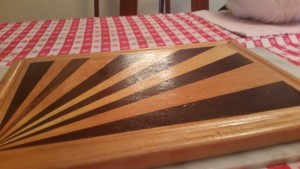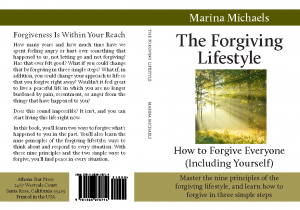A friend and I are writing a screenplay together. This isn’t our first time writing screenplays, but it is our first time collaborating.
Of course, our first question when we began was, what are our software options?
What we were looking for:
- Because we are Windows users, the software must run on Windows (or in a browser). Sadly for all you Mac users who came here hoping to find useful information, we excluded all Mac-only programs. Though several of these programs run on Macs and even Linux, so you might want to take a look anyway. I indicate the platforms each program runs on.
- The ability to collaborate live and online. This is essential to us. We could have used workarounds such as putting the file into Dropbox, but we still would only have been able to work on the screenplay one person at a time.
- Formatting
- Software that “knows” the proper formatting and does much of it automatically.
- The ability to print out a properly formatted screenplay.
- The ability to create scripts for different purposes (film, TV, and so on).
- Editing
- The ability to create unobtrusive notes at any level, from script level to line level.
- Autocompletion and autoformatting: if I start typing something, I want the software to make a good guess at what I want to do, and then do it (for example, typing INT. tells the software to make it a scene line; pressing a carriage return after a character’s name creates a line formatted as dialogue.)
- Standard editing abilities such as drag and drop and spelling checking.
- A revision history and the ability to restore anything at the line level. (I don’t mean Ctrl-Z; I mean something like revision tracking at the line level, so we could restore deleted lines much later if we decided we wanted them after all.)
- Interface
- A modern, readable interface. I don’t want to use something that looks like it dates back to the early days of Windows, and I don’t want to have to squint to read the text in the interface.
- Easy navigation from scene to scene.
- The ability to view scenes as cards and rearrange them. And to put notes on those cards.
- Storage in the cloud or the ability to work with storage in the cloud, such as Dropbox.
- The ability to import and export Final Draft files.
- Reports would be nice, too.
All of the following software products have a fairly good set of our desired features. In the end, we chose WriterDuet for our working tool, and Final Draft for printing in proper format. Though it looks like we didn’t need Final Draft, since WriterDuet, like many others, outputs in Final Draft’s file format.
Three notes:
- This post is just an overview of each product, not an exhaustive comparison, analysis, or review
- I rounded all prices up to the nearest whole dollar; for example, Final Draft’s $249.99 became $250.
- The asterisks refer to whether the program imports and exports Fountain files. No asterisk doesn’t mean it doesn’t; it just means I couldn’t find out whether it did. For more on Fountain, see that entry.
The contestants (in alphabetical order)
Adobe Story Free and Adobe Story Plus. Adobe Story Free is free. Adobe Story plus is $10 a month. If you have an Adobe Creative Cloud subscription, Adobe Story Plus is included with it. Looks awesome and has some very cool features beyond what I listed above (such as seeing a summary of the speaking and non-speaking characters in any scene). As with all Adobe products, the interface is hard to read and there’s not much you can do about it. Charcoal gray is the in thing at Adobe. (And with many web designers.) Collaboration is possible-ish (not working together, and not real time). Browser-based, so platform agnostic.
(“Agnostic” means you can run the software on any platform that supports a browser. The term arises out of the heated arguments that developers and platform users have with each other over which platform/process/software/programming language is better; those disagreements are called flame wars or religious wars. Can’t we all just get along? Anyway, if your software runs on a variety of platforms, then it is said to be agnostic.)
Amazon Storywriter. Free browser-based tool. You don’t have to be online to use it. Doesn’t look like it permits live collaboration. Looks pretty cool, though. Platform agnostic.
Celtx. The basic version is free, but it is very, very basic. If you want additional useful features, the pricing starts at $8.25 (or maybe $10) per month. Collaboration available in the paid versions. Tons of features, but for some reason, their website left me cold. Looks like Celtx is browser based (so, agnostic), but couldn’t tell for sure.
Fade In* ($50). Comes with free updates, so you pay once and you have it forever. See this handy comparison chart. Has an intriguing dialogue tuner. Doesn’t have collaboration. Windows, Mac, Linux, iPhone, iPad, Android versions.
Final Draft* ($250). Claims to be the industry standard, but competition is heating up. Collaboration not possible. We bought this so we could output our scripts in the proper format, but we are using WriterDuet (described below) to collaborate. When we finish, we’ll export to Final Draft format. Windows, Mac, iPhone, iPad versions.
Movie Magic Screenwriter. Their claim to fame: “We are the only company to win an Academy Technical Achievement Award for screenwriting software. Movie Magic Screenwriter 6 is a preferred file format of WGA, West.” Good set of features, though the interface hasn’t left the 90s yet. I like the use of color. Windows, Mac versions.
Scrivener* ($40, and worth every penny). A word processing tool for writers, no matter what you are writing. Screenplays, novels, short stories, legal documents, nonfiction—you name it, you can do it in Scrivener. I’ve used Scrivener to write nonfiction and fiction both. I especially love the ability to easily move sections of text around. You can also store your files in the cloud (Dropbox, OneDrive, etc.), so your files are available from any device. Its screenwriting support is quite good. If you write things other than screenplays, buy Scrivener. Windows, Mac versions.
WriterDuet*. Free, with a paid “Pro” version. For the Pro version, you can subscribe for $8 a month, or pay a one-time price of $120. (Sign up for a free account to get discount offers.) We chose WriterDuet because it is the only one we found that makes it possible for us to both work on the screen live and in real time (while talking on Skype, of course). It also has many of the cool features that other products have. WriterDuet is awesome and the creator is very responsive to questions and problems. Browser-based, so platform agnostic.
A markup language
Fountain. Fountain isn’t software; instead, it’s a text-based markup language. In text-based markup languages, you use plain text to indicate formatting, and then some software to display the text in its formatted form. If you have ever edited a wiki page (while not in WYSIWYG mode), you have used a text-based markup language. With markup languages, you can write using any text editor on almost any device. (I’ve listed some text editors at the end of this post. One of them supports Fountain.) Fountain is a set of rules (called syntax) specifically for marking up your screenplay. You use an app to see your Fountain screenplay properly formatted. Or you can import your Fountain file into the major screenwriting apps. Markup languages can be a bit scary at first, but they are dead easy.
Text editors
Some excellent, free text editors:
- AsciiDocFX. Meant for AsciiDoc files, but you could use it as a text editor. Runs on Windows, Mac, and Linux.
- Atom*. I used to use TextPad, but am trying out Atom. Haven’t figured out how it supports Fountain yet, but I will. Runs on Windows, Mac, and Linux.
- Brackets. Aimed at the programming crowd, but quite useful and has a ton of plugins. Runs on Windows, Mac, and Linux.
- Notepad ++. Notepad++ has been around since the days of free love and daisies in rifles. (Not really, but it’s a sprightly elder.) Runs on Windows.
Some robust, customizable text editors (not free):
- Sublime ($70), aimed at programmers but very cool for anyone else. Runs on Windows, Mac, and Linux.
- TextPad ($27). Windows only.
- UltraEdit ($80). Runs on Windows, Mac, and Linux.
I was not asked to write this, nor have I been compensated for this post. (If I had been, it would have been a full-on review of each product.)

